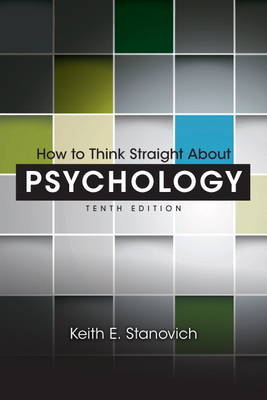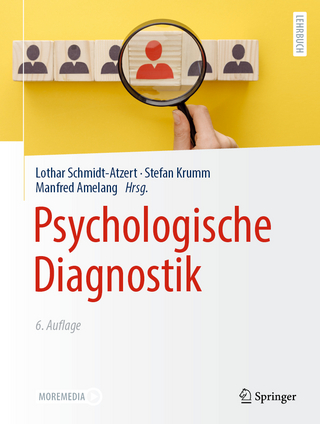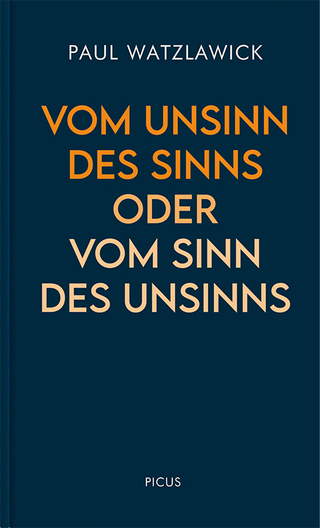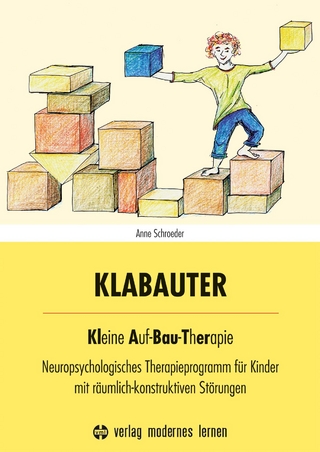
How to Think Straight About Psychology
Pearson (Verlag)
978-0-205-91412-8 (ISBN)
- Titel erscheint in neuer Auflage
- Artikel merken
Keith Stanovich's widely used and highly acclaimed book presents a short introduction to the critical thinking skills that will help students to better understand the subject matter of psychology. How to Think Straight about Psychology, 10e helps students recognize pseudoscience and be able to distinguish it from true psychological research, aiding students to become more discriminating consumers of psychological information.
Learning Goals
Upon completing this book, readers should be able to:
Evaluate psychological claims they encounter in the general media.
Distinguish between pseudoscience and true psychological research.
Apply psychological knowledge to better understand events in the world around them.
Keith E. Stanovich is currently Emeritus Professor of Human Development and Applied Psychology at the University of Toronto. He is the author of over 175 scientific articles and seven books. Stanovich is the 2012 recipient of the E. L. Thorndike Career Achievement Award from the American Psychological Association and the recipient of the 2010 Grawemeyer Award in Education. In 2000 he received the Distinguished Scientific Contribution Award from the Society for the Scientific Study of Reading. Stanovich is a Fellow of the American Psychological Association (Divisions 3, 7, 8, and 15) and the Association for Psychological Science.
In this Section:
1. Brief Table of Contents
2. Full Table of Contents
1. BRIEF TABLE OF CONTENTS:
Chapter 1: Psychology Is Alive and Well (and Doing Fine Among the Sciences)
Chapter 2: Falsifiability: How to Foil Little Green Men in the Hand
Chapter 3: Operationism and Essentialism: “But, Doctor, What Does It Really Mean?”
Chapter 4: Testimonials and Case Study Evidence: Placebo Effects and the Amazing
Chapter 5: Correlation and Causation: Birth Control by the Toaster Method
Chapter 6: Getting Things Under Control: The Case of Clever Hans
Chapter 7: “But It’s Not Real Life!”: The “Artificiality” Criticism and Psychology
Chapter 8: Avoiding the Einstein Syndrome: The Importance of Converging
Chapter 9: The Misguided Search for the “Magic Bullet”: The Issue of Multiple
Chapter 10: The Achilles’ Heel of Human Cognition: Probabilistic
Reasoning
Chapter 11: The Role of Chance in Psychology
Chapter 12: The Rodney Dangerfield of the Sciences
2. FULL TABLE OF CONTENTS:
Preface
Chapter 1: Psychology Is Alive and Well (and Doing Fine Among the Sciences)
The Freud Problem
The Diversity of Modern Psychology
Implications of Diversity
Unity in Science
What, Then, Is Science?
Systematic Empiricism
Publicly Verifiable Knowledge: Replication and Peer Review
Empirically Solvable Problems: Scientists’ Search for Testable Theories
Psychology and Folk Wisdom: The Problem with “Common Sense”
Psychology as a Young Science
Summary
Chapter 2: Falsifiability: How to Foil Little Green Men in the Hand
Theories and the Falsifiability Criterion
The Theory of Knocking Rhythms
Freud and Falsifiability
The Little Green Men
Not All Confirmations Are Equal
Falsifiability and Folk Wisdom
The Freedom to Admit a Mistake
Thoughts Are Cheap
Errors in Science: Getting Closer to the Truth
Summary
Chapter 3: Operationism and Essentialism: “But, Doctor, What Does It Really Mean?”
Why Scientists Are Not Essentialists
Essentialists Like to Argue About the Meaning of Words
Operationists Link Concepts to Observable Events
Reliability and Validity
Direct and Indirect Operational Definitions
Scientific Concepts Evolve
Operational Definitions in Psychology
Operationism as a Humanizing Force
Essentialist Questions and the Misunderstanding of Psychology
Summary
Chapter 4: Testimonials and Case Study Evidence: Placebo Effects and the Amazing
Amazing Randi
The Place of the Case Study
Why Testimonials Are Worthless: Placebo Effects
The “Vividness” Problem
The Overwhelming Impact of the Single Case
The Amazing Randi: Fighting Fire with Fire
Testimonials Open the Door to Pseudoscience
Summary
Chapter 5: Correlation and Causation: Birth Control by the Toaster Method
The Third-Variable Problem: Goldberger and Pellagra
Why Goldberger’s Evidence Was Better
The Directionality Problem
Selection Bias
Summary
Chapter 6: Getting Things Under Control: The Case of Clever Hans
Snow and Cholera
Comparison, Control, and Manipulation
Random Assignment in Conjunction with Manipulation Defines the True Experiment
The Importance of Control Groups
The Case of Clever Hans, the Wonder Horse
Clever Hans in the 1990s
Prying Variables Apart: Special Conditions
Intuitive Physics
Intuitive Psychology
Summary
Chapter 7: “But It’s Not Real Life!”: The “Artificiality” Criticism and Psychology
Why Natural Isn’t Always Necessary
The “Random Sample” Confusion
The Random Assignment Versus Random Sample Distinction
Theory-Driven Research Versus Direct Applications
Applications of Psychological Theory
The “College Sophomore” Problem
The Real-Life and College Sophomore Problems in Perspective
Summary
Chapter 8: Avoiding the Einstein Syndrome: The Importance of Converging
Evidence
The Connectivity Principle
A Consumer’s Rule: Beware of Violations of Connectivity
The “Great-Leap” Model Versus the Gradual-Synthesis Model
Converging Evidence: Progress Despite Flaws
Converging Evidence in Psychology
Scientific Consensus
Methods and the Convergence Principle
The Progression to More Powerful Methods
A Counsel Against Despair
Summary
Chapter 9: The Misguided Search for the “Magic Bullet”: The Issue of Multiple
The Concept of Interaction
The Temptation of the Single-Cause Explanation
Summary
Chapter 10: The Achilles’ Heel of Human Cognition: Probabilistic Reasoning
“Person-Who” Statistics
Probabilistic Reasoning and the Misunderstanding of Psychology
Psychological Research on Probabilistic Reasoning
Insufficient Use of Probabilistic Information
Failure to Use Sample Size Information
The Gambler’s Fallacy
A Further Word About Statistics and Probability
Summary
Chapter 11: The Role of Chance in Psychology
The Tendency to Try to Explain Chance Events
Explaining Chance: Illusory Correlation and the Illusion of Control
Chance and Psychology
Coincidence
Personal Coincidences
Accepting Error in Order to Reduce Error: Clinical versus Actuarial Prediction
Summary
Chapter 12: The Rodney Dangerfield of the Sciences
Psychology’s Image Problem
Psychology and Parapsychology
The Self-Help Literature
Recipe Knowledge
Psychology and Other Disciplines
Our Own Worst Enemies
Isn’t Everyone a Psychologist? Implicit Theories of Behavior
The Source of Resistance to Scientific Psychology
The Final Word
References
Name Index
Subject Index
| Erscheint lt. Verlag | 15.10.2012 |
|---|---|
| Sprache | englisch |
| Maße | 150 x 230 mm |
| Gewicht | 294 g |
| Themenwelt | Schulbuch / Wörterbuch |
| Geisteswissenschaften ► Psychologie | |
| Sozialwissenschaften ► Soziologie | |
| ISBN-10 | 0-205-91412-8 / 0205914128 |
| ISBN-13 | 978-0-205-91412-8 / 9780205914128 |
| Zustand | Neuware |
| Haben Sie eine Frage zum Produkt? |
aus dem Bereich



